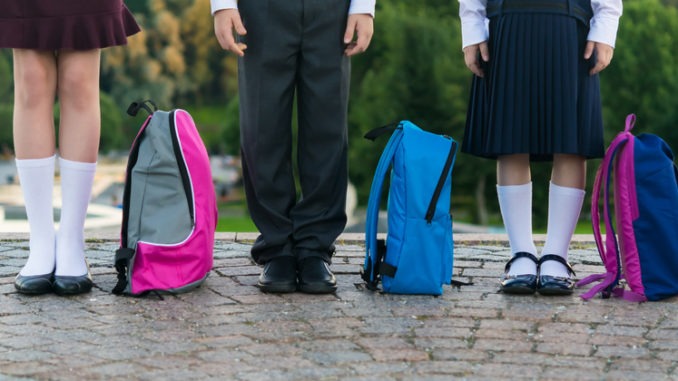
Many people believe that there needs to be a strategy to prevent the spread of COVID-19 infections in schools from reaching the wider community
CREDIT: This is an edited version of an article that originally appeared on The Guardian
Last month nearly nine million children returned to school across England and Wales amid much excitement and uncertainty. Everyone wants children to be able to continue learning without interruption, but current government school reopening guidelines fail to incorporate a crucial lesson we’ve learned in the past six months – the risk of so-called aerosol transmission by people without symptoms, now understood to be a major mode by which the virus is shared.
The government’s U-turns have amplified the sense of uncertainty around this virus, but there is much we do know about how it spreads.
There is growing evidence of the role of children in this pandemic. Since early summer, in the US, rates of infection have been rising faster among children than in the general population. Recent outbreaks there, including at two camps in Georgia and a number of schools, indicate that, when conditions are right, coronavirus can spread quickly within groups of children. Today it is being reported that dozens of schools across England and Wales are facing outbreaks.
Even if children have, luckily, been spared the worst health outcomes of COVID-19 so far, much remains unknown about the long-term health consequences of mild or even asymptomatic cases in children – and children can transmit the virus to family members, teachers and each other, helping to spread it back into the community.
An inconvenient fact
One worrying feature of this disease is that many who spread it don’t have symptoms. This makes controlling it especially hard and, since children are among those least likely to exhibit symptoms, this problem is especially acute in schools. How best to cope with this inconvenient fact?
A recent article in the British Medical Journal has a colour-coded chart showing how the risk of transmission varies according to setting for asymptomatic people. Any school child can confirm that most school settings currently fall into the red zones on this chart, representing relatively unsafe conditions – poorly ventilated, high-occupancy environments with people speaking without face coverings for a prolonged period of time.
We can’t make the risks disappear, but we can dramatically reduce them. Opening windows, requesting that students wear face masks in classrooms, as well as in busy corridors, when necessary, and making sure that large groups of students don’t spend long periods of time together will all make a difference. These tools can be implemented alongside the current guidelines that focus on hand and respiratory hygiene, surface cleaning and the exclusion of those with symptoms.
Some schools are making these adjustments but, as images of crowded classrooms and even large-group assemblies circulating on social media make clear, social distancing is currently treated as a desirable – but not strictly necessary – condition for school reopenings.
With the proactive use of additional venues (such as community halls, gyms and marquees) to expand learning spaces, it should be possible to reduce class or bubble sizes, especially for older children who are more able to maintain distancing. Current government guidelines explicitly exclude this option.
No ‘one-size-fits-all’ here
Schools don’t exist in a vacuum. Local transmission rates dictate the background level of risk that any student or teacher will pass on the virus to others. If local rates are low, school heads can afford to relax social distancing and mask-wearing policies, and allow larger bubbles. If local rates rise, as they did in Scotland over the weekend, it may become necessary to introduce further interventions to ensure that outbreaks don’t spread within schools, where they can be amplified and transmitted more forcefully back out into the community.
There can’t be a ‘one-size-fits-all’ approach to the reopening of schools. We will need to adjust our responses as local rates rise and fall. Communicating clearly to children, parents and the wider community the steps that will be taken, and why, should be a central part of the government response. This would build much needed trust, and reduce unnecessary anxiety and confusion when changes in policies are made, as is inevitable – and indeed necessary – when dealing with this virus.
Clear guidance from the government as to just what these steps are, and when they will be triggered – for example, if new cases per day rise above 10 or 50 per 100,000, as Independent Sage suggested in a recent report – is currently sorely lacking.
Test and trace
In addition to limiting the airborne transmission of COVID-19, testing is a key tool in controlling its spread. ‘Active engagement with NHS Test and Trace’ is one of the mainstays of the general public health guidance that schools are expected to follow; but this only works in cases where symptoms are visible.
Yet there are currently no reliable and inexpensive tests to support widespread tracking of the silent infections common in children. There may be a lag between when the virus is spread by asymptomatic children and when illness surfaces in their close contacts, where it can be identified by test and trace. Such a lag could, potentially, enable outbreaks to grow rapidly before they are stifled by self-isolation. Without widespread surveillance in place, school outbreaks driven by asymptomatic transmission can easily mushroom.
It seems there is no plan to track, or contain, outbreaks as they occur in schools, from where they can spread to local communities, potentially at the cost of lives. For both Labour and the Conservatives, the main aim was getting children back into the classroom. That was the easy bit; the harder task is to come.
It’s time for the government to recognise that we need to outfit our children in their warmest jumpers and open windows in classrooms. When risks are high, we may need to ask students to wear masks in their classrooms. Paired with a meaningful and widespread test-and-trace service, and the discipline to introduce community restrictions if necessary when local rates rise (including, for example, stricter restrictions on pubs and restaurants), we can ensure that the excitement of getting millions of children back to school doesn’t lead to further chaos and uncertainty.



Be the first to comment